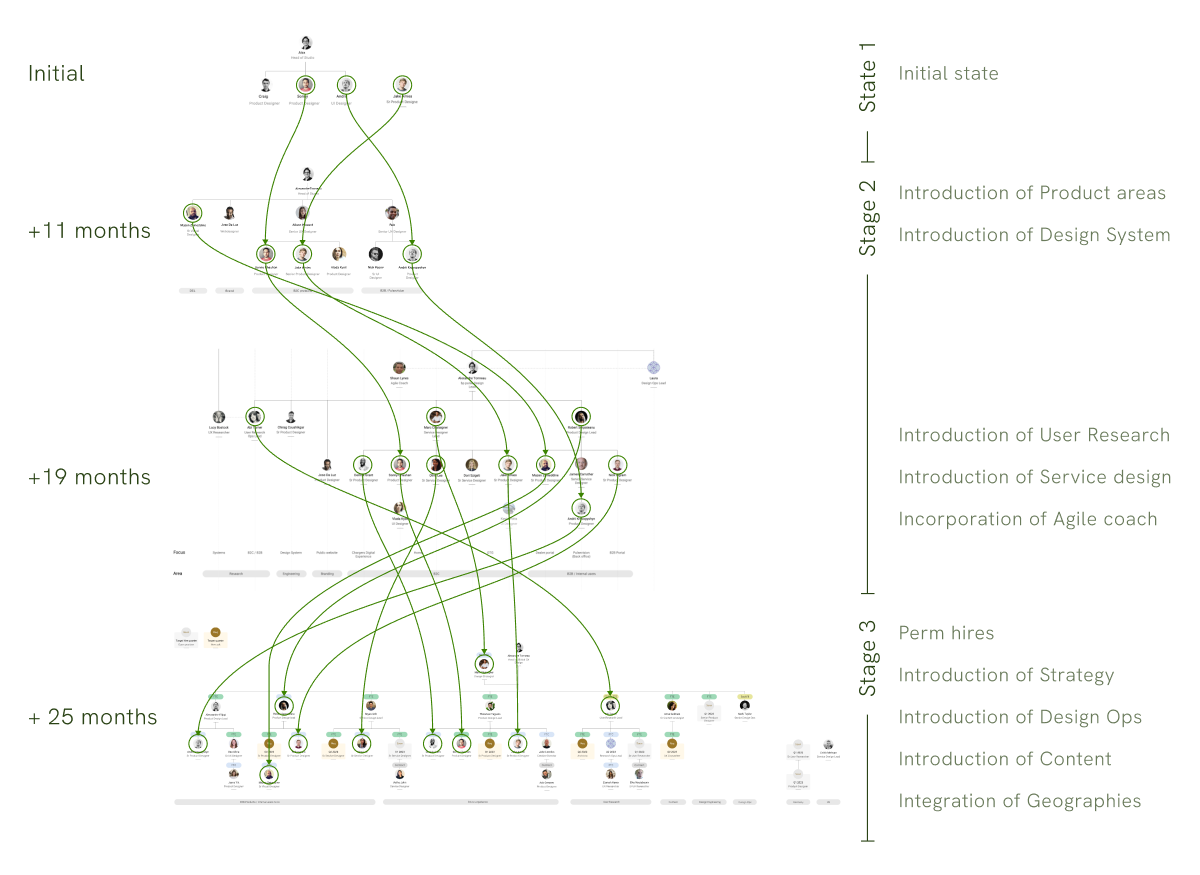Org design
During my tenure at bp pulse, the team had to undergo significant evolution in order to meet the portfolio's delivery ambitions. When I joined, it comprised four members located in the UK and Ukraine. Two years later, the team had expanded to 25 professionals distributed globally.
This required 3 stages, each reshaping the team, and realigning roles and expertise:

Stage 1 - Reliance on external experts capable to manage projects A to Z with minimum supervision.
— Up to 8 team members
Stage 2 - Formation of small teams specialised in ‘product areas’ such as mobile, touchscreen, web. These comprised a mix of expert (e.g. design system) and senior resources.
— Up to 15 members
Stage 3 - Transition to in-house leads and the establishment of squads dedicated to specific product lines. These squads were tasked with supporting business outcomes, with each receiving matrix support across specialties, such as User Research, Content Design, Design engineering (Design system).
— From 15 members.
Each stage was accompanied with clear communication and purpose. This resulted in minimum turnover, which was crucial as the required knowledge to work in EV charging sector required long onboarding.